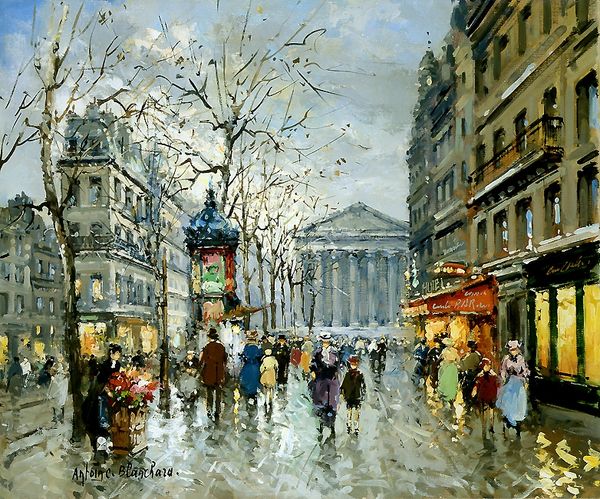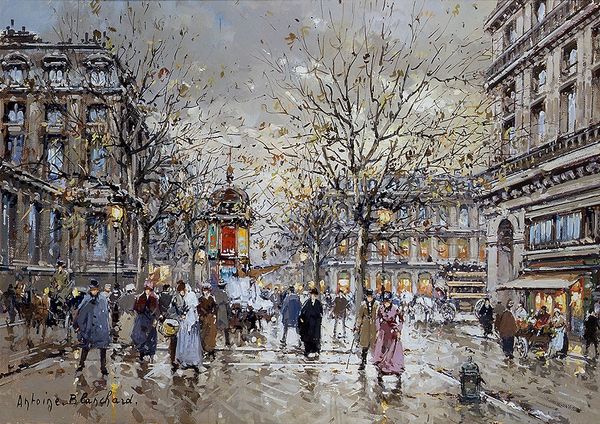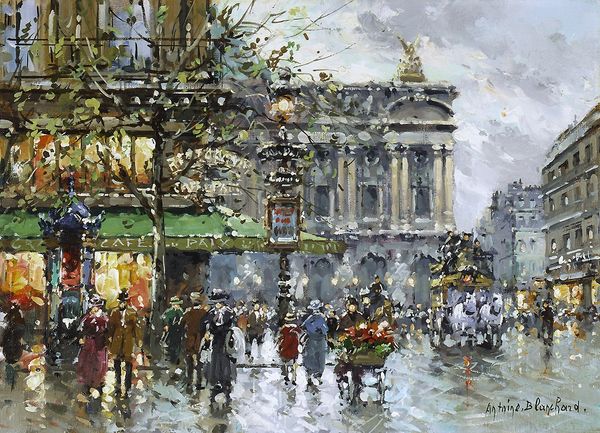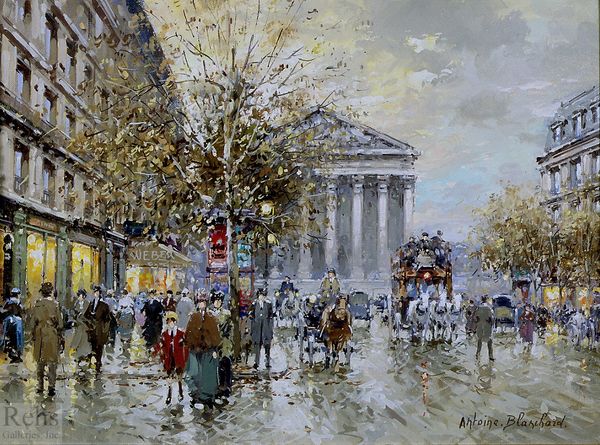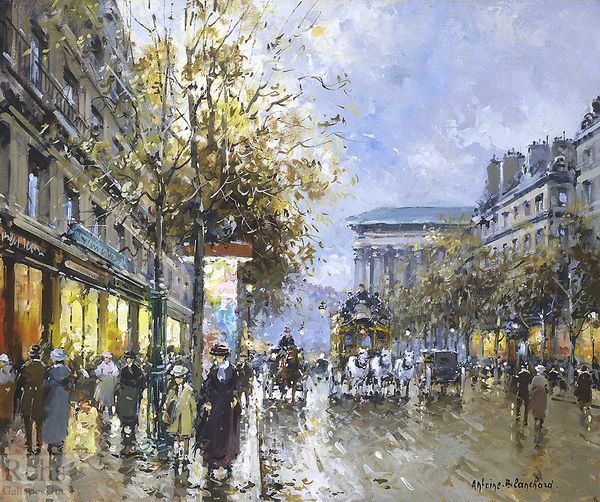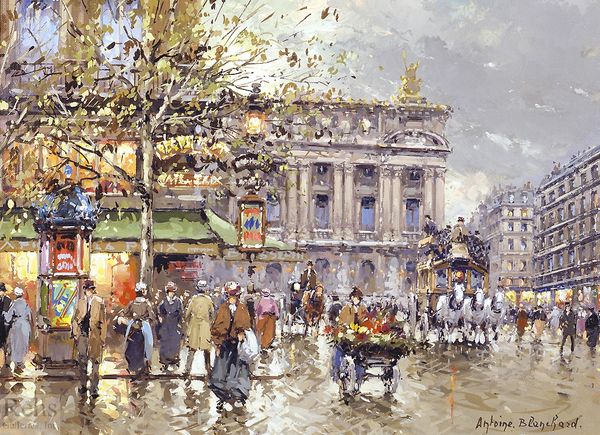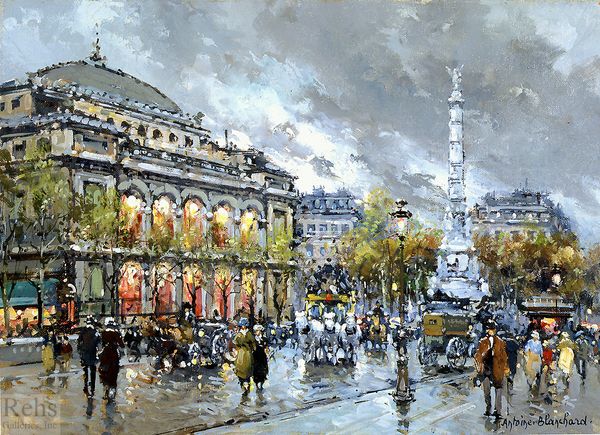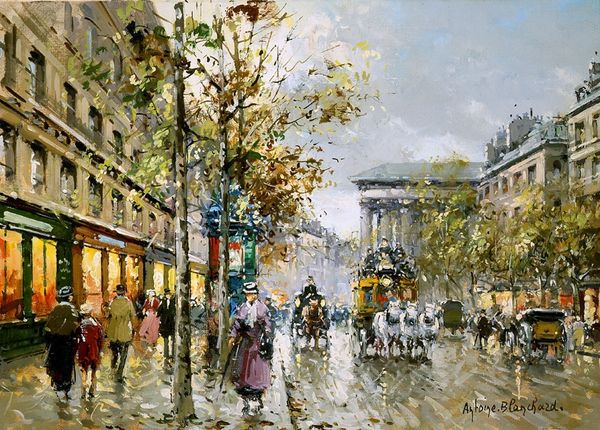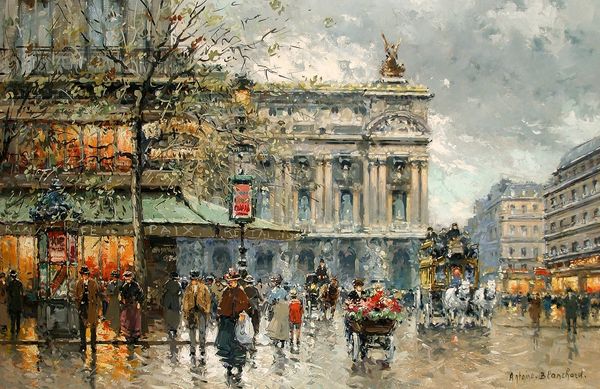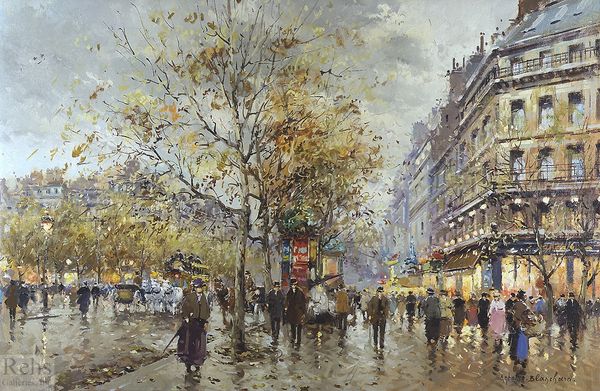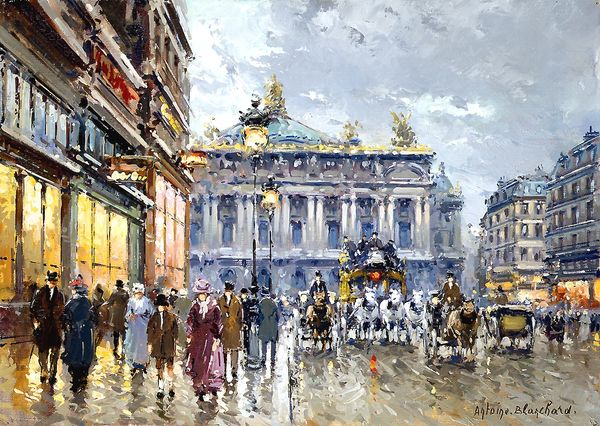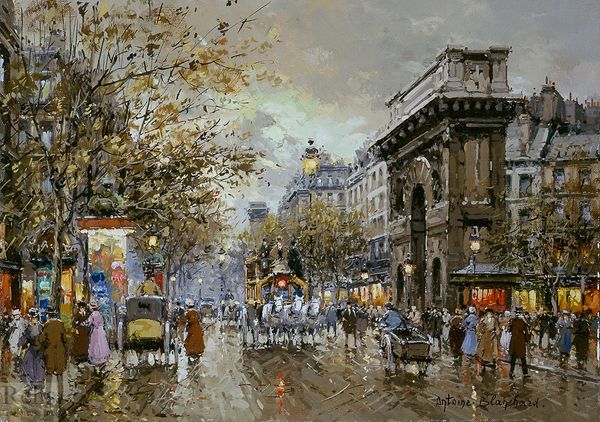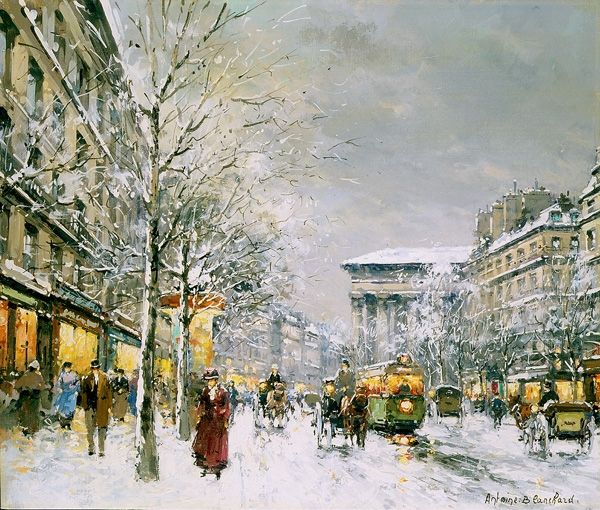
painting, plein-air, oil-paint
#
portrait
#
cityscape photography
#
urban landscape
#
cityscape
#
painting
#
impressionism
#
street view
#
plein-air
#
oil-paint
#
landscape
#
urban cityscape
#
impressionist landscape
#
city scape
#
street graffiti
#
urban art
#
cityscape
#
urban living
Copyright: Antoine Blanchard,Fair Use
Curator: Antoine Blanchard's "Paris, Rue Tronchet," captures a bustling city scene in what I would interpret as the early 20th century. The piece utilizes oil on canvas. Editor: My initial reaction is this subdued, dream-like atmosphere—a nostalgia wash. The gray palette feels like a memory resurfacing, that captures the transient nature of urban life, even down to the bare branches, the cobblestones. It feels... vaguely melancholic, wouldn’t you say? Curator: I would certainly agree. The subdued palette underscores the societal norms that restricted individuals, especially women. The anonymity of the crowd allows Blanchard to reflect on their constrained agency within rigid social structures of that era. Observe how their attire emphasizes conformity. Editor: It’s compelling how Blanchard uses visual shorthand—the architectural motifs repeated in the buildings to establish rhythm. I notice he places Madeleine Church as a key symbolic point. Is that its intended placement? How might the symbolic power of religious structure juxtapose with those ordinary Parisians? Curator: Precisely! Consider the symbolic weight of a religious institution towering over ordinary Parisians in their daily rituals and that striking contrast. How did religion shape identity? Class divisions and aspirations during La Belle Epoque come into play here. How does the weight of history and tradition bear down on the population? Blanchard incisively captures this sentiment. Editor: It also raises questions about what it means to construct a distinctly Parisian identity. We’ve got structures of faith, yes, but it's a landscape of commerce with a clear emphasis on daily social ritual with all the shops on the street and flower vendors too. Those were markers of emerging bourgeois culture, were they not? Curator: Undoubtedly. By focusing on the material realities of urban life and consumerism and contrasting it with traditional establishments, Blanchard effectively depicts an intersectionality. Editor: Yes, the reflections, blurred lines, almost hiding the building and the city and making them less the center and instead having that street become the focal point. It reveals an identity being actively reshaped and molded by the forces of modernization, commercialization. A constant state of negotiation. I find myself deeply affected by that interplay! Curator: Yes, Blanchard really calls attention to our experience of the modern era. Considering the political, economic, and cultural intersections operating during that period makes this painting such a compelling piece. Editor: Exactly. Thank you! It feels like this one opened a portal in my mind. It is like glimpsing through that gray rain-streaked Paris to now, still grappling with all those cultural questions, still just beneath the surface of contemporary living.
Comments
No comments
Be the first to comment and join the conversation on the ultimate creative platform.
